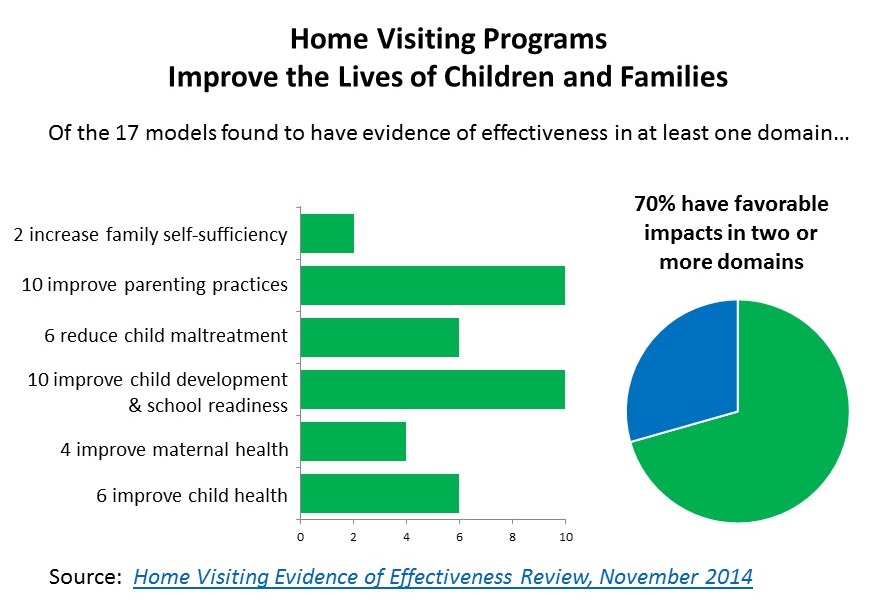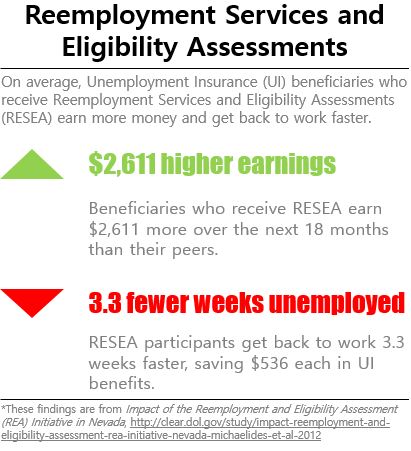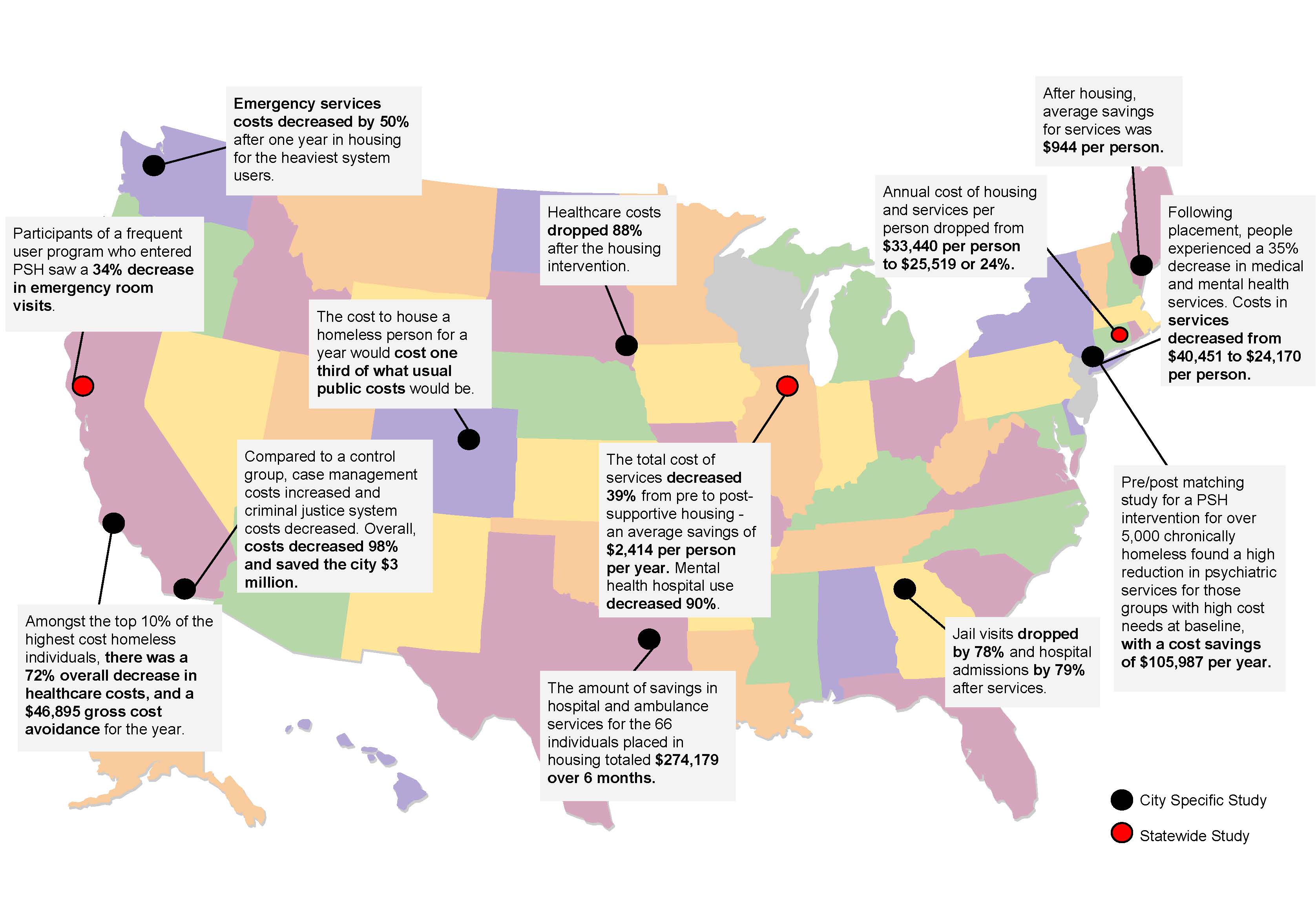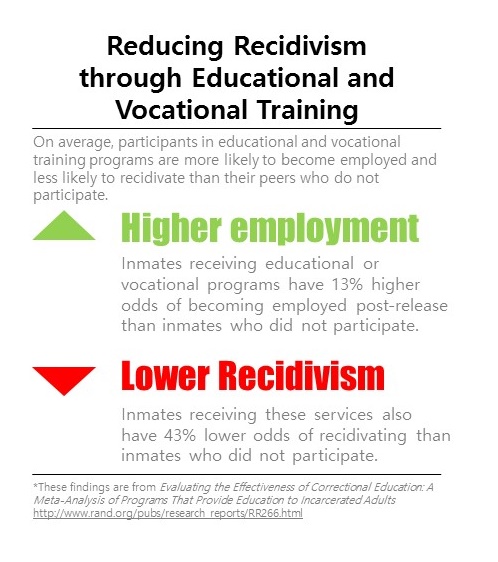
Yesterday, the President signed H.R. 2, the Medicare Access and CHIP Reauthorization Act of 2015, which passed both the House and Senate with overwhelming bipartisan support. Not only will the Medicare Access and CHIP Reauthorization Act of 2015 reform Medicare’s physician payment system to incentivize quality and value and extend the Children’s Health Insurance Program, it also includes a two-year extension of the Maternal, Infant, and Early Childhood Home Visiting Program (“Home Visiting”). The Home Visiting program, administered by the Department of Health and Human Services, funds States, territories, and tribal entities to develop and implement voluntary, evidence-based home visitation programs in which families that choose to participate receive advice, guidance, and other help from nurses, social workers, or other trained professionals during pregnancy and the first years of a child’s life.
The Home Visiting program builds upon decades of scientific research showing that home visits improve the lives of children and families by preventing child abuse and neglect, supporting positive parenting, improving maternal and child health, and promoting child development and school readiness. This research also shows that evidence-based approaches can provide a positive return on investment to society. By law, Home Visiting Program grantees must spend the majority of their grants to implement models that have been shown to improve child health and to be cost effective, with up to 25 percent of funding available to try out and rigorously evaluate other promising approaches. 
Thanks to investments made in the Affordable Care Act, the number of children and parents served by the Home Visiting program has tripled since 2012, reaching 115,545 in 2014, and the number of home visits provided has quadrupled, with more than 1.4 million home visits provided over the past three years. As part of a broader investment in early childhood education, the President’s Budget includes $15 billion in funding for the Home Visiting Program over the next 10 years, which would greatly expand grantees’ ability to reach at-risk children and families with evidence-based home visiting services. While less ambitious, the extension in the Medicare payment reform bill is a strong bipartisan endorsement of this important program, and will let grantees continue and build on their efforts to date.
Home Visiting is just one example of a program that the President’s Budget proposes to expand on the basis of strong evidence that it delivers value for the American people. Some of these programs, like Home Visiting, are already serving tens of thousands of people, but could have a larger impact with greater reach. Others have proven so effective in small experiments that we think they should be tried on a larger scale. Below are just a few examples of areas where the Budget proposes to expand proven practices.
The President’s Budget is able to make these important investments in evidence-based efforts, in large part because it reverses sequestration, freeing up resources for important national priorities.
- Getting more people back to work and increasing their incomes. The Budget includes a number of proposals to expand proven approaches to get more people back to work at better-paying jobs. For example, the Budget includes a $100 million increase to expand reemployment services and eligibility assessments for the one-third of unemployment insurance beneficiaries who are most likely to run out of benefits before becoming reemployed. A high-quality randomized control trial in Nevada found that in comparison to their peers who did not receive these services, participants got back to work nearly a month faster, and they earned over $2,600 more than their peers over the next year and half.

- Ending Homelessness. Chronic homelessness was long considered an intractable problem, but a broad body of research, including rigorous evaluations, demonstrated that permanent supportive housing is more cost-efficient and effective than other approaches. Various studies have shown that permanent supportive housing not only improves housing stability but can also reduce costs for emergency department and inpatient services.
Studies on the Cost Effectiveness of Permanent Supportive Housing

By investing in evidence-based approaches and partnering with communities across the country, the Administration has made significant progress toward the President’s ambitious goals of ending homelessness, especially among veterans. In January 2015, New Orleans, Louisiana became the first major American city to end veterans’ homelessness entirely, and several major cities, including Salt Lake City, Utah and Phoenix Arizona, have ended chronic homelessness among veterans. The overall number of veterans experiencing homelessness has declined by 33 percent—nearly 25,000 veterans—since 2010, and, with continued focus from Federal, State, and local partners, we are on a path to end veteran homelessness by the end of this year.
The 2016 Budget includes $2.5 billion for HUD’s Homeless Assistance Grants, which will support 15,000 additional families through rapid rehousing and an estimated 25,500 new units of permanent supportive housing targeted to the chronically homeless, strategies that have been proven to work. These funds, in coordination with targeted special purpose Housing Choice Vouchers, will support the Administration’s efforts to end chronic homelessness in 2017 and to make significant progress in ending homelessness across other populations.
- Reducing Crime and Recidivism. The Administration is committed to a comprehensive strategy to contain incarceration costs over the long term by facilitating inmates’ transition into society to reduce recidivism rates, increase public safety, and strengthen communities. The Budget includes a $145 million increase for programs to reduce recidivism and reentry and address the cycle of incarceration. These investments cover a range of activities, including expanding capacity for correctional education programs. A recent high-quality study that looked across all of the research for these programs found that participants had a 43 percent lower chance of recidivating and 13 percent higher chance of becoming employed than similar individuals who didn’t participate in the program.

These are just a few examples of programs the 2016 Budget would expand on the basis of strong evidence of effectiveness. We look forward to working with Congress on making additional investments in these and other evidence-based programs.
For more about the Administration’s efforts to use rigorous evaluation and data to improve programs, check out OMB’s Evidence and Evaluation Website.
Aviva Aron-Dine is the Acting Deputy Director of the Office of Management and Budget.

